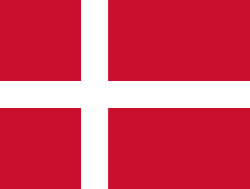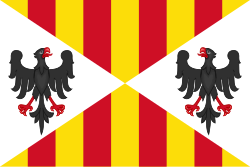Irena Řecká a Dánská
| Irena Řecká | |
|---|---|
| Princezna z Řecka a Dánska | |
 | |
| Narození | 11. května 1942 (82 let) Kapské Město |
| Rod | Glücksburkové |
| Otec | Pavel I. Řecký |
| Matka | Frederika Hannoverská |
| Příbuzní | Sofie Řecká a Konstantin II. Řecký (sourozenci) |
| Některá data mohou pocházet z datové položky. | |
Princezna Irena Řecká (* 11. května 1942, Kapské Město), celým jménem Irena Řecká a Dánská (řecky Πριγκίπισσα Ειρήνη της Ελλάδας και Δανίας) je dcerou řeckého krále Pavla I. Řeckého a jeho manželky Frederiky Hannoverské, mladší sestra bývalé španělské královny Sofie Řecké a sesazeného krále Konstantina II. Řeckého. Oficiálně je titulována Její královská Výsost princezna Irena z Řecka a Dánska.
Život
Narodila se 11. května 1942 v Kapském Městě v Jihoafrické republice poté, co řecká královská rodina musela opustit Němci okupované Řecko během 2. světové války. Irena byla žačkou řecké klavíristky Giny Bachauerové a krátký čas i sama hrála profesionálně na benefičních koncertech v Evropě a USA. Roku 1962 byla družičkou na svatbě Juana Carlose I. a její sestry Sofie Řecké. Nikdy nezapomněla na místo svého narození a drží patronát nad African Cultural Organization. Hovoří 5 jazyky: řecky, anglicky, španělsky, francouzsky a německy.
Princezna Irena studovala filosofii, archeologii pod vedením Theophany Arvanitopoulouvé a také hudbu. Spolu se svou sestrou a Theophanou vydala knihu o archeologii pod názvem „OstrakaEkDekelias“ (Úlomky z Dekélie). Pod vedením profesora Dr. T. M. P. Mahadevana, ředitele Střediska moderní vědy ve filosofii na Univerzitě v Madrásu studovala náboženství.[1]
Irena měla vztah s princem Michaelem Orleánským, hrabětem z Évreux, který ji opustil a oženil se s Béatrice Pasquierovou de Franclieu, a to roku 1967 v Casablance, bez souhlasu svého otce Jindřicha Orleánského, hraběte pařížského a uchazeče o francouzský trůn. Potom se nikdy nevdala a zůstala u svého bratra Konstantina.
Po sesazení bratra Konstantina z řeckého trůnu, odešla s matkou do Indie. Po matčině smrti žila v paláci Zarzuela v Madridu, královské rezidenci své sestry Sofie a švagra Juana Carlose.[2]
Infantka Cristina, neteř Ireny, pojmenovala po princezně svoji dceru.
Zájmy
Jako zakladatelka a ředitelka dobročinné organizace World in Harmony (Mundo en Armonía) založené roku 1986 se sídlem v Madridu, jejímž cílem je pomoc lidem v nouzi a týraným zvířatům, spolupracuje s několika dobročinnými organizacemi a kulturními ustanoveními:
- African Cultural Organization of South Africa (ACOSA), patronát
- Ashram International[3], patronát
- Banco Santander Central Hispano Foundation[4]
- European String Professors Association (ESTA), čestná prezidentka
- Dr. T.M.P. Mahadevan Foundation (India), viceprezidentka
- Yehudi Menuhin Foundation,[5] patronát španělské pobočky
- Sarvodaya International Trust (India), in memoriam Mahatma Gandhi, vicepředsedkyně
- The Peres Center for Peace Association v Španělsku, členka čestné rady, výboru
Tituly a vyznamenání
Tituly
- 11. května 1942 – dodnes Její královská Výsost princezna Irena z Řecka a Dánska
Národní vyznamenání
 Dáma velkokříže Řádu svaté Olgy a Sofie[6]
Dáma velkokříže Řádu svaté Olgy a Sofie[6] Dáma velkokříže Řádu Spasitele[7]
Dáma velkokříže Řádu Spasitele[7]
Zahraniční vyznamenání
 Rytíř Řádu slona[8] – 11. září 1964
Rytíř Řádu slona[8] – 11. září 1964 Rytíř velkokříže Řádu zásluh o Italskou republiku – 27. listopadu 1962[9]
Rytíř velkokříže Řádu zásluh o Italskou republiku – 27. listopadu 1962[9] Dáma velkokříže spravedlnosti Řádu konstantiniánských rytířů sv. Jiří[10] – 1962
Dáma velkokříže spravedlnosti Řádu konstantiniánských rytířů sv. Jiří[10] – 1962 Dáma velkokříže Řádu Chula Chom Klao[11] – 14. února 1963
Dáma velkokříže Řádu Chula Chom Klao[11] – 14. února 1963
Vývod z předků
Odkazy
Reference
V tomto článku byl použit překlad textu z článku Irena Grécka na slovenské Wikipedii.
- ↑ You are being redirected.... www.greekroyalfamily.gr [online]. [cit. 2023-02-16]. Dostupné online.
- ↑ Real Decreto 164/2018, de 16 de marzo, por el que se concede la nacionalidad española por carta de naturaleza a Su Alteza Real doña Irene de Grecia de Hannover [online]. 2018-04-03 [cit. 2022-02-16]. [www.boe.es/boe/dias/2018/04/03/pdfs/BOE-A-2018-4570.pdf Dostupné online].
- ↑ Archivovaná kopie. www.ashraminternational.org [online]. [cit. 2015-05-07]. Dostupné v archivu pořízeném dne 2015-05-18.
- ↑ Prensa | Fundación Banco Santander. www.fundacionbancosantander.com [online]. [cit. 2023-02-16]. Dostupné online. (španělsky)
- ↑ Archivovaná kopie. www.menuhin-foundation.com [online]. [cit. 2015-05-07]. Dostupné v archivu pořízeném dne 2014-08-10.
- ↑ [1][nedostupný zdroj]
- ↑ DINASTÍAS | Los Foros de la Realeza • Ver Tema - Gala prewedding Constantino II y Ana María de Grecia. dinastias.forogratis.es [online]. [cit. 2023-02-16]. Dostupné online.
- ↑ PEDERSEN, Jørgen. Riddere af Elefantordenen 1559–2009. Odense: Syddansk Universitetsforlag, 2009. ISBN 8776744345.
- ↑ Le onorificenze della Repubblica Italiana. www.quirinale.it [online]. [cit. 2019-10-14]. Dostupné online.
- ↑ www.constantinianorder.org [online]. [cit. 07-05-2015]. Dostupné v archivu pořízeném dne 05-03-2012.
- ↑ Royal State Visits: Visita de Estado de Grecia a Tailandia - 1963 [online]. 2013-07-26 [cit. 2023-02-16]. Dostupné online.
Externí odkazy
 Obrázky, zvuky či videa k tématu Irena Řecká a Dánská na Wikimedia Commons
Obrázky, zvuky či videa k tématu Irena Řecká a Dánská na Wikimedia Commons - (anglicky) Oficiální stránky řecké monarchie
- (anglicky) World in Harmony
Média použitá na této stránce
Coat of arms of the Kingdom of Greece in 1936–1973
- Royal Coat of Arms of Greece under the Glücksburg dynasty, created after the restoration of King George II to the throne in 1935, to the exile of King Constantine II in 1967 and finally until the abolition of the monarchy in 1973.
- The Escutcheon features the white cross on a dark blue field of Greece. The Inescutcheon features the Arms of the Greek line of the House of Schleswig-Holstein-Sonderburg-Glücksburg. The shield is then topped with a golden Royal Crown.
- It features an escutcheon divided by the red and white cross of the Order of the Danneborg, the first quarter features the arms of Denmark (three crowned blue lions and nine hearts in yellow field). The second of Schleswig (two blue lions passant in yellow field). The third divided into four; the chief features the three royal crowns in blue field of the Kalmar Union, the second half with a crowned stockfish on red field of Iceland and the last half divided between the ram of the Faroe Islands and a polar bear of Greenland, both on blue fields. The fourth quarter is divided between two halves, the chief depicts a yellow field with a blue lion passant over nine red hearts of the King of the Goths, the lower half depicts a crowned golden lindorm on a red field of the King of the Wends.
- Upon it is another inescutcheon in red, divided into four quarters: the first a a silver nettle leaf of Holstein, the second the a swan with a golden crown of Stormarn, the third a knight dressed in golden armor on a silver horse of Dithmarschen and the fourth of a golden horse's head of Lauenburg.
- Upon it is another inescutcheon divided the first features the red and yellow bars of Oldenburg, the second a golden cross on a blue field of Delmenhorst.
- The escutcheon rests on a golden pedestal and supported by two human figures representing the Greek mythological hero Herakles (Heracles), holding a wooden club and wearing the skin of the Nemean lion.
- The escutcheon is surrounded by the ribbon and cross of the Order of the Redeemer, the cross depicts Christ Pantocrator, surrounded by the order's motto:"Η ΔΕΞΙΑ ΣΟΥ ΧΕΙΡ, ΚΥΡΙΕ, ΔΕΔΟΞΑΣΤΑΙ ΕΝ ΙΣΧΥΙ" or "Thy right hand, O Lord, is become glorious in power" from Exodus, 15:6.
- The motto of the Coat of arms and of the dynasty, depicted on a golden ribbon below the pedestal reads: "Ἰσχύς μου ἡ ἀγάπη τοῦ λαοῦ" or "The people's love, my strength"
- The coat of arms is then surrounded by a dark blue mantle and topped with another royal crown.
The national flag of Kingdom of Thailand; there are total of 3 colours:
- Red represents the blood spilt to protect Thailand’s independence and often more simply described as representing the nation.
- White represents the religion of Buddhism, the predominant religion of the nation
- Blue represents the monarchy of the nation, which is recognised as the centre of Thai hearts.
Autor: Di (they-them), Licence: CC BY-SA 4.0
Royal arms of Denmark from 2024, based on information from https://www.kongehuset.dk/en/the-monarchy-in-denmark/the-royal-symbols/the-royal-coat-of-arms/# (image).
Flag of the Kingdom of Greece (1863-1924; 1935-1973).
Při zobrazení tohoto souboru lze snadno přidat orámování
Autor: Eric Koch / Anefo, Licence: CC0
Collectie / Archief : Fotocollectie Anefo
Reportage / Serie : [ onbekend ]
Beschrijving : Aankomst Grieks Koninklijk paar op Schiphol, v.l.n.r. prins Bernhard , Koning Constantijn , Koningin Anne Marie tijdens spelen volksliederen /
Datum : 7 maart 1966
Trefwoorden : VOLKSLIEDEREN, aankomsten
Persoonsnaam : Bernhard, prins, Constantijn koning, Koningin Anne Marie
Fotograaf : Koch, Eric / Anefo
Auteursrechthebbende : Nationaal Archief
Materiaalsoort : Negatief (zwart/wit)
Nummer archiefinventaris : bekijk toegang 2.24.01.05








